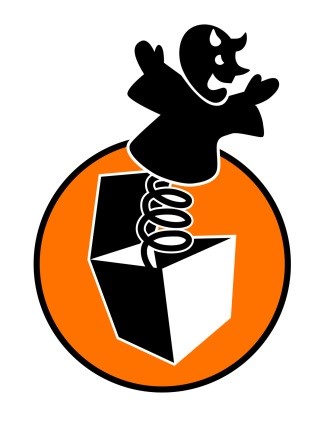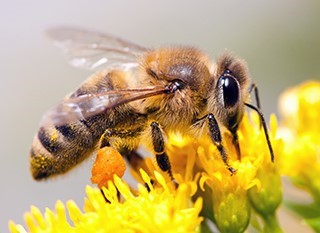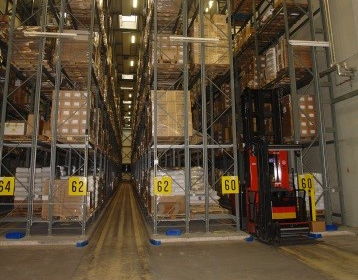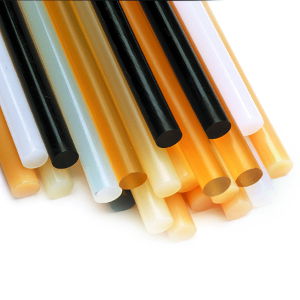News
When the jack-in-the-box effect is not a laughing matter …
 When the little clown or toy pops out of the box, it usually sparks joy and amazement. When opened parcels are delivered to recipients, however, these are certainly not a source of amusement. Incorrectly sealed packages result in anger and displeasure. The first place people tend to look to find the fault is the glue, which is designed to securely fasten the cardboard box’s lid. But that’s not always true.
When the little clown or toy pops out of the box, it usually sparks joy and amazement. When opened parcels are delivered to recipients, however, these are certainly not a source of amusement. Incorrectly sealed packages result in anger and displeasure. The first place people tend to look to find the fault is the glue, which is designed to securely fasten the cardboard box’s lid. But that’s not always true.
The reliability of a box’s seal or fastener is influenced by a number of factors: The choice of hot-melt adhesive, the restoring forces on the cover flap, and the quality of the packaging surface. But it’s the surface of the cardboard material that’s crucial when it comes to securely fastened packages.
Read on, as we tell you more about the role packaging material plays when choosing a hot-melt adhesive.
Jan Hunke onboard as second managing director
 Over the last 25 years, BÜHNEN GmbH & Co. KG has very successfully become a specialist in hot-melt adhesives. Our strength lies in being able to offer our customers comprehensive solutions to all kinds of complex applications. The company wants to keep this success story going well into the future, and must thus ensure that the rising challenges are taken into account, including at an HR level.
Over the last 25 years, BÜHNEN GmbH & Co. KG has very successfully become a specialist in hot-melt adhesives. Our strength lies in being able to offer our customers comprehensive solutions to all kinds of complex applications. The company wants to keep this success story going well into the future, and must thus ensure that the rising challenges are taken into account, including at an HR level.
One very important driving force behind the BÜHNEN success story is Hans-Gerhard Hartje, who has been onboard and successfully managed his sales team for almost 40 years.
BÜHNEN employs 50,000 new workers

May 2018 will see a 50,000-strong bee colony move into the garden area of our Bremen headquarters.
As you may have read in media reports, the world’s honey-bee population has been on the decline for many years. In Germany alone, the number of bee colonies has dropped by 30% from around 1.1 million to approximately 700,000 since 1990. There are many reasons why the bees are dying: Pesticides, monocultures, mites and parasites all heavily deplete bee populations.
And these days, species extinction is occurring up to 1000 times faster than evolutionary loss. And yet bees generate approx. 2.5 billion Euros for the economy in Germany alone. So it’s no surprise that, after cattle and pigs, bees are the most important livestock for humans worldwide.
Logistics Little Helpers
 Businesses and consumers have long since become accustomed to fast deliveries and even same-day delivery. And a smooth returns service goes without saying. Factors like these play a big role in the success of a business.
Businesses and consumers have long since become accustomed to fast deliveries and even same-day delivery. And a smooth returns service goes without saying. Factors like these play a big role in the success of a business.
But not every company has the necessary storage capacity, time or staff to meet these requirements. They pass these activities on to other companies that specialise in them. This has allowed the development of an important branch of industry that uses its expertise in precisely this area. External service providers ensure greater efficiency in warehousing, shipping and returns management. Often, at the end of the day, it involves a box, a package or a display in which hot melt adhesives play a major role.
Hot Melt Classification: Base polymer EVA
 Ethylene vinyl acetate (EVA) is a base polymer commonly used in standard adhesives. It is the basis of hot melt adhesives used in floristry, handcraft and the packaging industry, amongst other sectors.
Ethylene vinyl acetate (EVA) is a base polymer commonly used in standard adhesives. It is the basis of hot melt adhesives used in floristry, handcraft and the packaging industry, amongst other sectors.
EVA based hot melts are 100% solid and transparent in their basic form. They are multicomponent systems in which the properties can be adjusted by skilfully combining various polymers and additives. EVA hot melt adhesives contain about 33% polymer. These polymers have good compatibility with the additives. Additives can include resin, wax, oil, fillers and tackifiers with which the flowability, cure time, setting time, softening point or colour are controlled. The adhesive acquires its characteristic properties from the recipe.
